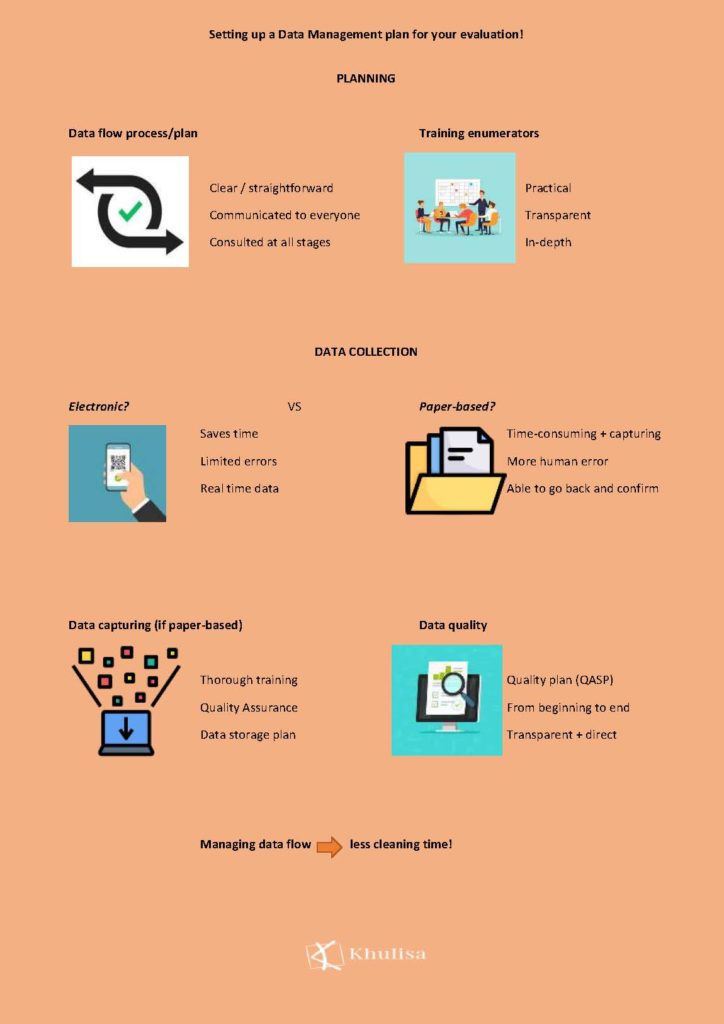Third in a three-part series about Khulisa’s presentations at the 2022 South African Monitoring & Evaluation Association (SAMEA) Conference. Read Part 1 and Part 2.
At Khulisa’s Date Café session during the recent 2022 SAMEA conference, Khulisa evaluator Zamo Thwala presented a series of tips on how to set up a data management plan for an evaluation. Below is a summary of Zamo’s presentation, which outlines what we learned from a 2021 early grade reading research and evaluation project in South Africa’s North West province.

An evaluation is only as good as its data management plan. Poor planning from the beginning may result in low quality data, as well as time wasted trying to manage and clean the data later on. Here are some suggested steps to help you manage your data flow, improve data quality, and limit the time you spend cleaning the mess later:
- Create a clear data flow process/plan and communicate it to everyone involved. The plan, as well as any changes to it, should be communicated at all stages of the project.
- Consider all the possible data collection methods, for example: electronic vs. paper-based data collection. Consider the pros and cons for both methods, and decide on the right method or combination of methods.
- Train enumerators in a clear, practical, transparent, and in-depth manner. Investing in more than one pilot will help ensure that you are using appropriate and relevant tools, as well as ensure that the data collection team is familiar and confident enough to collect quality data.
- Define the data capturing process: Conduct thorough training of the data capturers on the tools and the rationale for the study. Use the same people to both collect and capture data, if possible, as they already understand the data. Ensure you have a reliable data storage plan, which will guide on data storage during and after capturing.
- Put together a clear and practical Quality Assurance Surveillance Plan (QASP), which will guide data quality from beginning to end. The QASP must be transparent and direct, making it easy for everyone to understand their role, and others’ roles, within the evaluation.
Zamo also created a handy pamphlet summarizing how to create a great data management plan:
